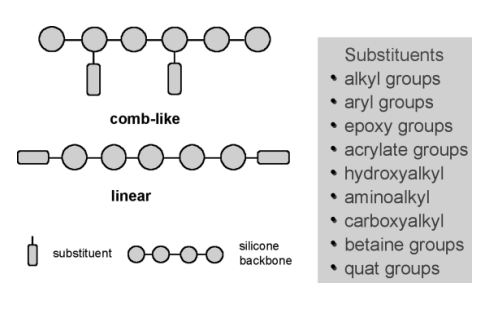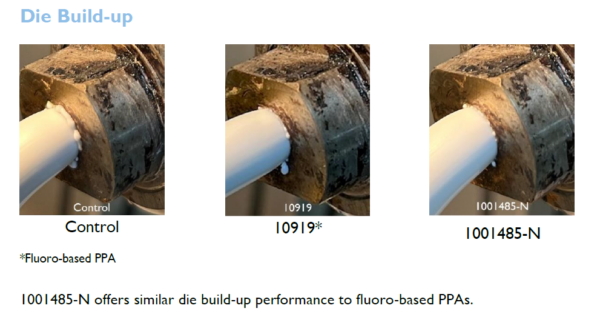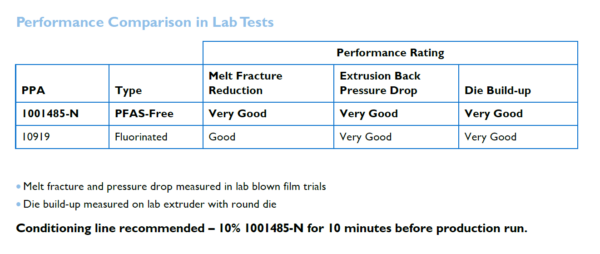Anticipating Change: The Move to Siloxane-Free PPAs

Siloxanes, a group of silicon-based compounds known for their versatility and resilience, are integral to enhancing the performance of plastics. However, their potential health risks have sparked a debate in the EU on the necessity of imposing restrictions on their use.
Siloxanes in Plastics
Siloxanes are fundamental members of the broad family of silicone materials. They are characterized by their Si-O-Si backbone, necessary for the production of silicone polymers, imparting plastics with unparalleled flexibility, moisture resistance, and thermal stability. These compounds enable the creation of products ranging from medical devices to kitchenware, showcasing an impressive balance of mechanical and chemical properties. Siloxanes are used in a broad range of consumer products (antiperspirants, skin-care creams, hair conditioners, and color cosmetics), automotive polishes, fuel additives, antifoaming agents, and processing aids.
Cyclic Siloxanes
As fundamental constituents of silicon polymers, cyclic siloxanes feature a structure of Si-O atoms arranged in a closed loop, creating their characteristic cyclic form. This arrangement endows them with distinctive properties as a hybrid inorganic-organic material. The primary cyclic siloxanes available on the market, D4, D5, and D6, consist of 4, 5, and 6 repeating units, respectively. These compounds find extensive use in manufacturing silicone rubbers, gels, and resins.
Linear Siloxanes
Linear Methyl-Siloxanes (LMS) represent a crucial segment of the silicone polymer family, characterized by their linear chain of siloxane (Si-O) units. Common variants in this group include L2, L3, L4, and L5, denoting the number of siloxane units within the molecule. Unlike their cyclic counterparts, linear siloxanes are valued for their versatility in applications that require polymers with adjustable viscosities and mechanical properties.
These linear structures contribute significantly to the formulation of a wide range of silicone-based products. Due to their linear configuration, they can be tailored to exhibit specific characteristics by modifying their molecular weight and the length of their polymer chains. This customization allows for the creation of materials that meet precise requirements for elasticity, tensile strength, and resistance to environmental factors.
Organically Modified Siloxanes (OMS)
Manufacturers can modify siloxanes in numerous ways. By attaching substituents to the siloxane backbone through Si–C or Si–O–C linkages, they create a diverse array of copolymers, arranging them either statistically or in blocks, they can be linear siloxanes or comb-like.
Manufacturers employ these modified siloxanes as additives in the polymer processing stages, such as extrusion, injection molding, or blow molding. They also utilize them to improve material characteristics on specific surfaces. The primary benefit of these compounds is their combination of silicone oil’s properties with excellent compatibility with the matrix. In several polymers, like Polycarbonate, an organo-modified siloxane (OMS) serves as a dispersant agent and enhances scratch resistance. Additionally, its use as a lubricant and the improvement of certain mechanical properties, such as impact strength, underscore its multifunctional advantages.

Organomodified siloxanes (OMS) Courtesy of Siloxanes as Additives for Plastics.
Environmental and Health Concerns
Recent findings, such as those from the Norwegian Environment Agency, highlight a crucial differentiation between linear and cyclic siloxanes. Contrary to earlier generalizations, it is the linear siloxanes that have been identified as particularly persistent and bioaccumulative. This distinction is crucial for understanding the environmental impact of siloxanes, as linear siloxanes pose significant concerns due to their ability to persist in ecosystems and accumulate in the food chain, potentially leading to long-term environmental damage and health risks.
The persistence and bioaccumulation of linear siloxanes suggest they could pose more substantial risks to aquatic life and potentially impact human health through accumulation in the environment. These findings necessitate a reevaluation of regulatory approaches and risk assessments for siloxanes, emphasizing the need for targeted research to understand the nuances of their environmental behaviors and impacts fully.
Regulatory Actions and Debates
The regulatory landscape concerning siloxanes is increasingly influenced by scientific studies and environmental assessments, notably the comprehensive research conducted by the Norwegian Environment Agency. This study has shed light on the persistence and bioaccumulation risks of linear siloxanes, challenging previous perceptions and signaling a need for regulatory reevaluation. The findings have prompted heightened scrutiny from regulatory bodies, particularly within the European Union (EU), where discussions are underway regarding the potential for more stringent controls or an outright ban on certain siloxane compounds.
Alternatives to Siloxanes in Plastics
Companies specializing in additives are preparing for potential restrictions on siloxanes used as Polymer Processing Aids (PPAs). In response to global regulatory trends, the latest PPA offerings are designed to be compliant, featuring formulations that are both PFAS-free and now also devoid of siloxanes. This shift is a testament to the industry’s proactive approach to environmental stewardship and regulatory compliance. Companies such as AMPACET are at the forefront of this transition, offering siloxane-free polymer processing aids. These alternatives not only align with the growing demand for more sustainable and safer chemicals but also ensure that businesses remain competitive in markets increasingly governed by stringent environmental regulations.

Die Build-up with Fluoro-based vs PFAS-Free and Siloxanes-Free. Courtesy of AMPACET.

Performance Comparison in Lab Tests for Fluorinated vs PFAS & Siloxanes- Free. Courtesy of AMPACET.
The debate over siloxanes in plastics encapsulates the broader challenges of modern material science—balancing technological advances with environmental and health considerations. While the call for bans reflects legitimate concerns, a path forward will likely involve nuanced regulation, continued scientific inquiry, and the development of sustainable alternatives. As we navigate these complexities, the goal remains clear: to harness the benefits of plastics while minimizing their ecological footprint and ensuring public health.

Very much agree with your finalising statement:
“While the call for bans reflects legitimate concerns, a path forward will likely involve nuanced regulation, continued scientific inquiry, and the development of sustainable alternatives. As we navigate these complexities, the goal remains clear: to harness the benefits of plastics while minimizing their ecological footprint and ensuring public health.”